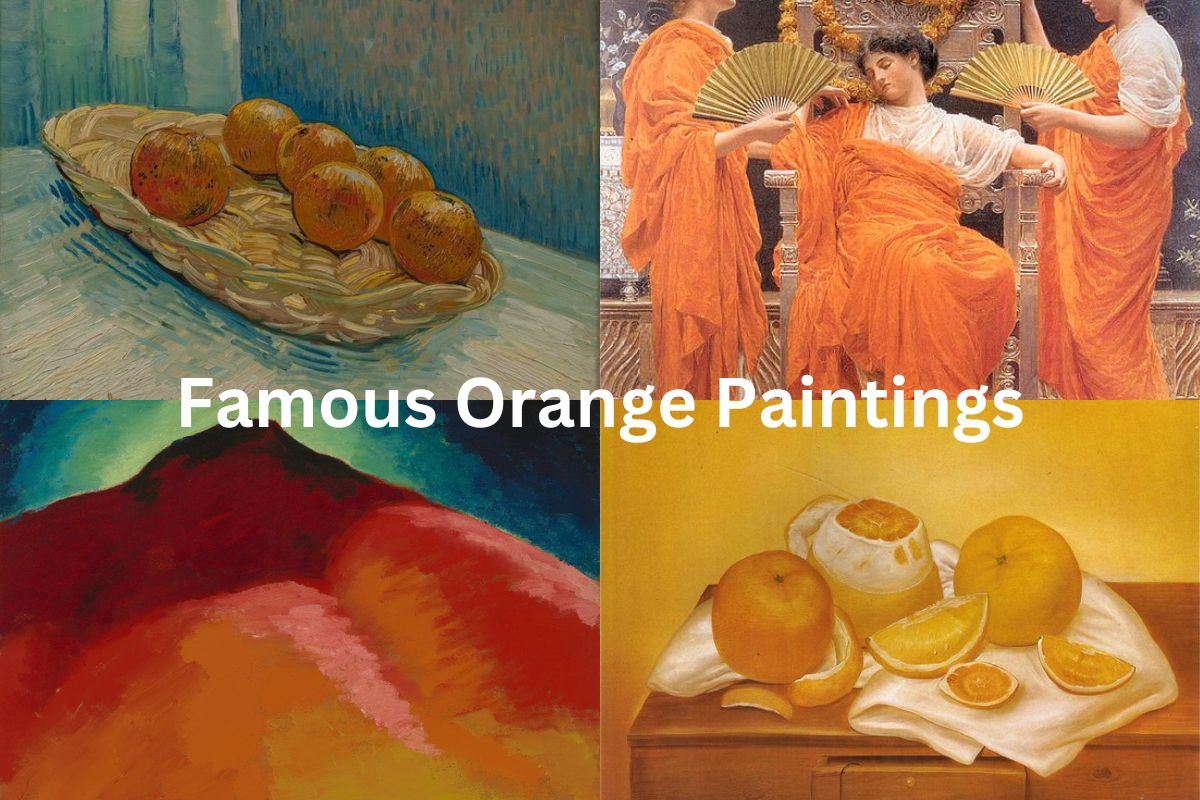Orange is a warm and energetic color that has been used by artists for centuries to evoke a variety of emotions and moods in their paintings.
This vibrant hue can create a sense of warmth, excitement, and joy, but it can also convey a feeling of caution, anxiety, and fear.
In some paintings, orange is used as the dominant color to create a sense of vibrancy and energy. The bold and bright nature of the color can make a painting stand out and draw the viewer’s attention to certain aspects of the composition. For instance, Henri Matisse often used various shades of orange and red to create a sense of warmth and intimacy in his paintings.
In other works of art, orange is used more sparingly to add depth and contrast to the composition. The warm tones of the color can create a sense of space and distance, especially when used in the background of a painting.
In summary, orange is a versatile and powerful color that can be used in different ways to evoke different emotions and moods in a painting. Whether used as the dominant color or sparingly, orange can add depth, contrast, and visual interest to a composition.
Famous Orange Paintings
1. Apples and Oranges – Paul Cézanne
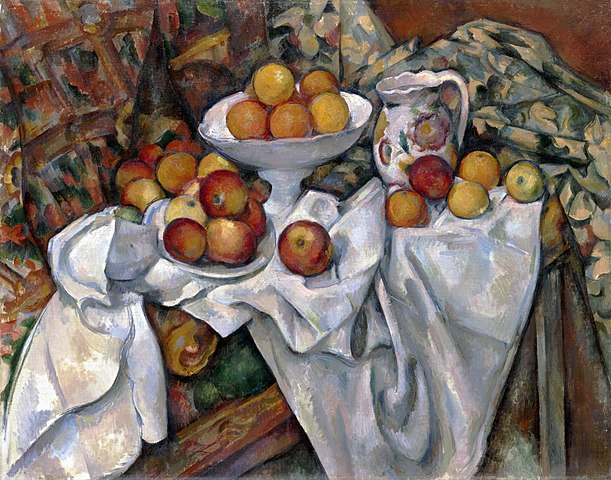
“Apples and Oranges” is a famous still-life painting by French artist Paul Cézanne. The painting is a part of a series of still-life works that Cézanne created throughout his career, and it is considered one of his most iconic pieces. The painting is notable for its simplicity and bold use of color.
The composition is simple, but Cézanne’s use of color and brushwork give the painting a sense of depth and texture. The apples and oranges are rendered in different shades of orange, yellow, and green, and the table is a warm, reddish-brown hue.
Cézanne was known for his exploration of form and space, and “Apples and Oranges” is no exception. The objects in the painting are not rendered realistically, but rather are simplified into basic shapes and colors. This creates a sense of abstraction that was ahead of its time and has influenced countless artists since.
2. Still Life with Basket and Six Oranges – Vincent van Gogh
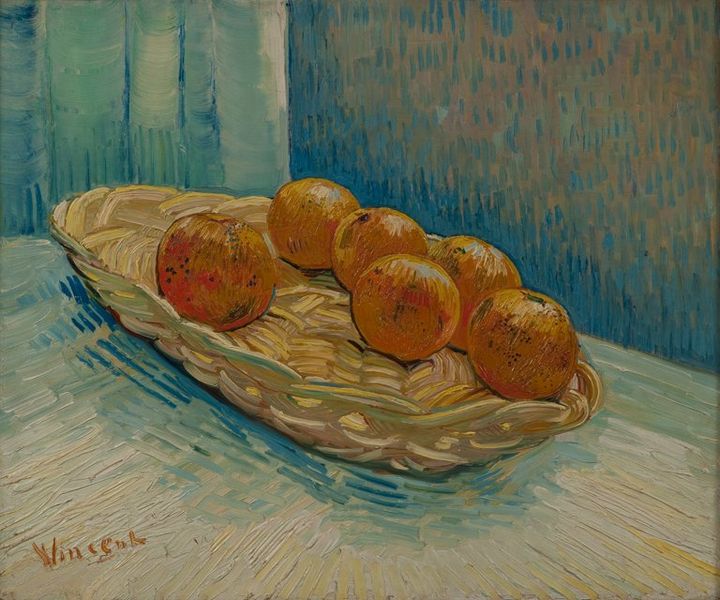
“Still Life with Basket and Six Oranges” is a famous painting by Dutch artist Vincent van Gogh. Completed in 1888, the painting is a part of a series of still-life works that van Gogh created throughout his career, and it is considered one of his most iconic pieces.
In the painting, a basket of six oranges is arranged on a plain wooden table. The composition is simple, but van Gogh’s use of color and brushwork give the painting a sense of depth and texture.
Van Gogh was known for his exploration of form and space, and “Still Life with Basket and Six Oranges” is no exception. The objects in the painting are not rendered realistically, but rather are simplified into basic shapes and colors. This creates a sense of abstraction that was ahead of its time and has influenced countless artists since.
The painting also showcases van Gogh’s mastery of brushwork. The artist used short, thick brushstrokes to create a sense of texture and dimensionality in the painting. The use of light and shadow also adds to the sense of depth in the work.
3. Orange and Yellow – Mark Rothko
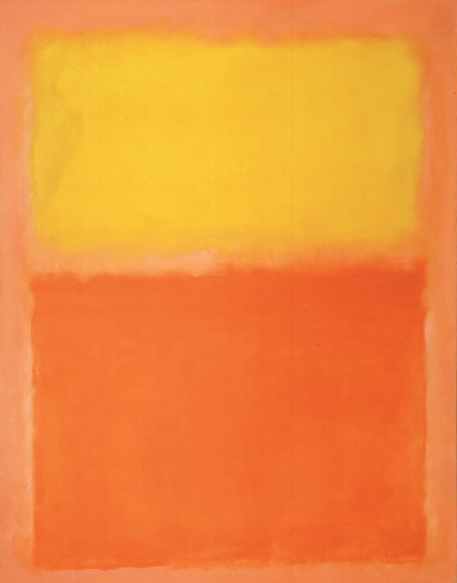
“Orange and Yellow” is a famous painting by American artist Mark Rothko. The painting is a part of his signature style of large-scale, abstract, color field paintings that he created in the 1950s and 1960s.
“Orange and Yellow” is a beautiful example of Rothko’s use of color to evoke emotion and create a sense of spirituality.
In the painting, two rectangular fields of color dominate the canvas: a bright, vivid orange at the bottom , and a deep, rich yellow at the top.
The two colors bleed into each other at the middle of the canvas, creating a soft gradient that blurs the line between them. The painting’s simplicity and boldness make it a striking and powerful work of art.
Rothko’s use of color was deliberate and intended to create an emotional response in the viewer. He believed that color could evoke a spiritual experience and that his paintings could inspire a sense of transcendence or contemplation.
In “Orange and Yellow,” the bright, vibrant orange represents energy and vitality, while the deep yellow represents warmth and comfort. The two colors together create a sense of harmony and balance.
The painting’s large size also contributes to its impact. Rothko’s color field paintings were often displayed in galleries and museums with ample space around them, so that viewers could stand close to the painting and immerse themselves in its colors and emotions.
4. Orange Prince – Andy Warhol
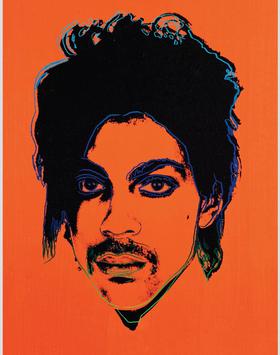
Andy Warhol’s Orange Prince (1984) is a portrait of Prince, the American musician, composer, record producer, multi-instrumentalist, actor, and director.
1984 saw the creation of twelve silkscreen portraits on canvas of Prince by Warhol. The Prince Series encompasses these paintings and four additional works on paper. Each painting is distinctive and distinguishable by color.
Orange Prince (1984) is regarded as an important late work that references Warhol’s portraits of cinema stars and celebrity icons from the early 1960s, including Marilyn Monroe, Elizabeth Taylor, and Jacqueline Kennedy.
5. Three Studies for Figures at the Base of a Crucifixion – Francis Bacon
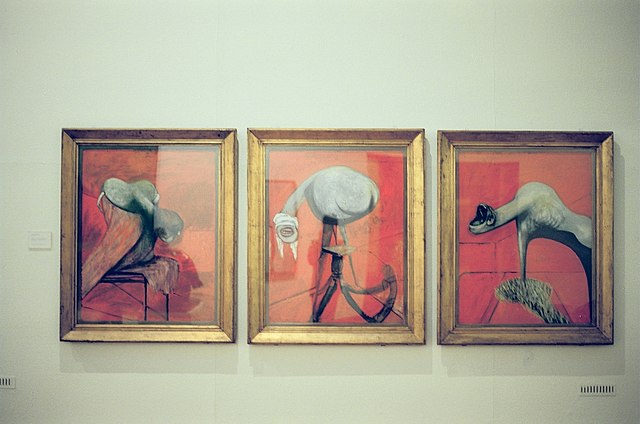
Francis Bacon, a British artist of Irish descent, completed Three Studies for Figures at the Base of a Crucifixion in 1944.
The paintings depict the three undulating humanoids known as the Eumenides from Aeschylus’ Oresteia, set against a burnt orange background.
On Sundeala fiber board, oil paint and pastel were used to complete the work in less than two weeks. The triptych represents the culmination of Bacon’s earlier research into Picasso’s biomorphs, his interpretation of the Crucifixion, and his presentation of the Grecian Furies.
Bacon intended to paint an expansive crucifixion scene with figures gathered at the foot of the cross, but he never completed the work.
6. No 22 Special – Georgia O’Keeffe
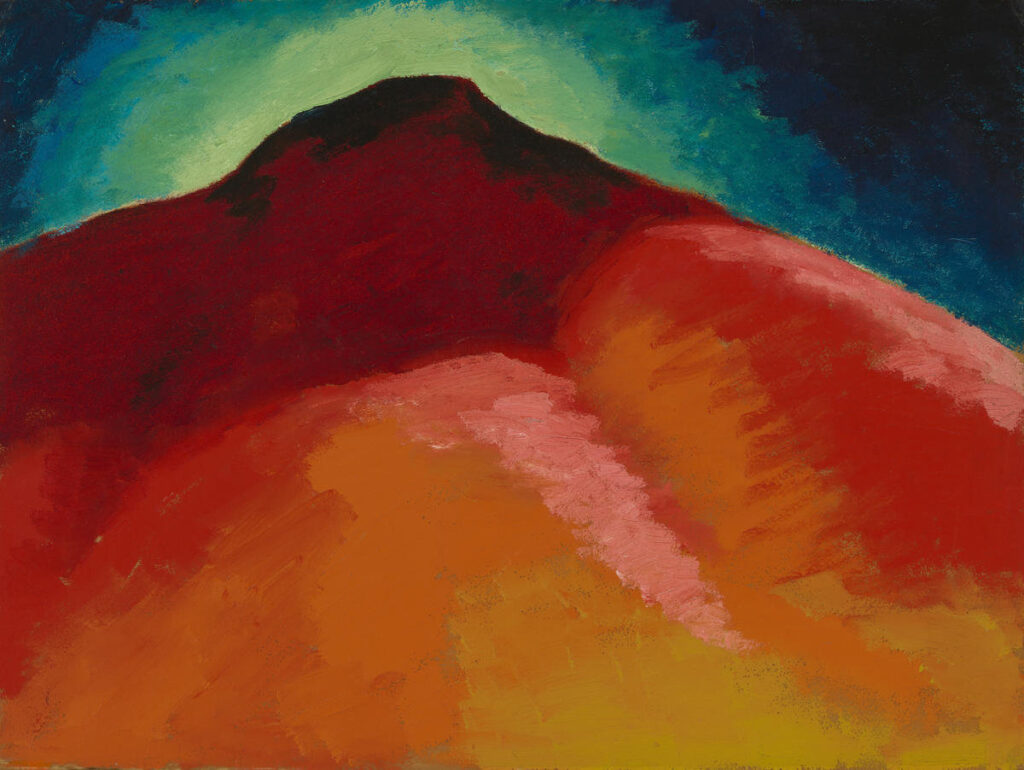
“No. 22 Special” is a famous painting by American artist Georgia O’Keeffe. Completed in 1928, the painting is a part of a series of works that O’Keeffe created exploring the themes of abstraction and the natural world.
In the painting, a series of bright, vibrant orange shapes are arranged in an abstract composition. The shapes are angular and geometric, and they appear to be moving and shifting against each other. The colors in the painting are bold and intense, with a range of oranges and yellows creating a sense of warmth and energy.
O’Keeffe’s attention to detail in “No. 22 Special” is particularly noteworthy. The placement of the shapes in the painting creates a sense of movement and tension, and the details of the shapes themselves add to the sense of depth and complexity in the painting.
The use of color and shape in the painting creates a sense of dynamism and energy, and the painting appears almost alive in its effect.
The orange tones in the painting add to the sense of warmth and energy, and they also convey a sense of excitement and adventure.
O’Keeffe was known for her use of abstraction and color to convey emotion and sensation, and in “No. 22 Special,” she creates a sense of exhilaration and movement through the use of bold, vibrant colors and dynamic shapes.
7. Midsummer – Albert Joseph Moore
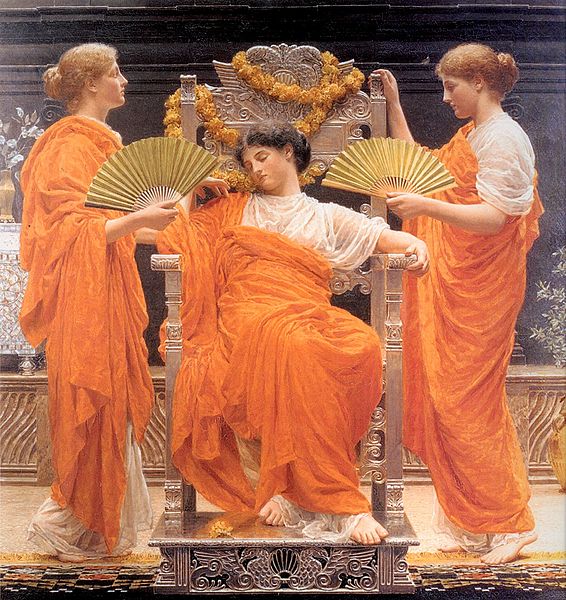
“Midsummer” is a famous painting by English artist Albert Joseph Moore. The painting was completed in 1887 and is considered one of Moore’s masterpieces. The painting is notable for its lush, vibrant colors, and its portrayal of a mythical, dreamlike world.
In the painting, three women are depicted in a garden, surrounded by flowers and greenery. The women are shown in elegant, flowing gowns, and their poses are graceful and languid.
The composition is rich with intricate details, such as the intricate floral patterns on the women’s dresses and the delicate flowers and leaves that surround them.
Moore’s use of color in “Midsummer” is particularly noteworthy. The painting features a range of warm, vibrant hues, including oranges, pinks, and yellows.
The colors are blended together in a way that creates a sense of depth and luminosity. The overall effect is dreamy and ethereal, evoking the feeling of a magical midsummer day.
Moore’s attention to detail is also evident in the painting’s composition. The placement of the women, the flowers, and the greenery creates a sense of balance and harmony. The women’s poses and the way their dresses flow create a sense of movement and grace.
8. Love and Pain – Edvard Munch
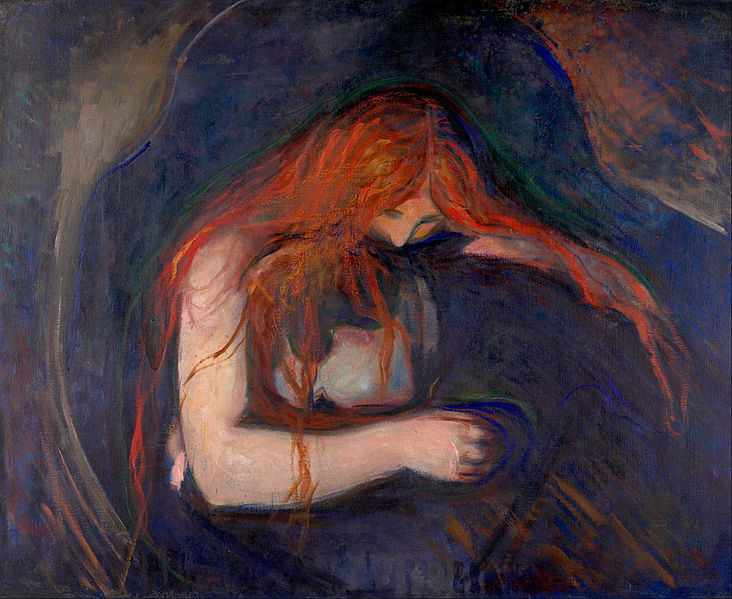
“Love and Pain” is a famous painting by Norwegian artist Edvard Munch. The painting was completed in 1893 and is considered one of Munch’s most iconic works. The painting is notable for its use of symbolism and its haunting, eerie atmosphere.
In the painting, a woman is depicted with her head tilted back and her mouth open, exposing her sharp teeth. Her hair is long and flowing, and she appears to be biting into the neck of a man. The man’s face is contorted in pain, and his hands are grasping at the woman’s hair.
Munch’s use of color in Love and Pain is particularly noteworthy. The painting features a range of warm, vibrant hues, including oranges, yellows, and reds. The colors are blended together in a way that creates a sense of tension and unease. The orange tones in the painting add to the eerie and unsettling atmosphere.
Munch’s attention to detail is also evident in the painting’s composition. The placement of the figures creates a sense of movement and balance, and the woman’s flowing hair and dress create a sense of motion and fluidity.
9. Oranges – Fernando Botero

“Oranges” is a famous painting by Colombian artist Fernando Botero. Completed in 1978, the painting is a part of a series of works that Botero created exploring the themes of everyday life and the mundane.
In the painting, a group of oranges is arranged on a plain wooden table. The composition is simple, but Botero’s use of color and form give the painting a sense of weight and presence.
The orange tones in the painting add to the sense of warmth and comfort, and they also convey a sense of simplicity and naturalness. Botero was known for his use of humor and irony in his works, and in “Oranges,” he creates a sense of humor by depicting such a simple and mundane subject in such a bold and colorful way.
10. Flaming June – Frederic Leighton
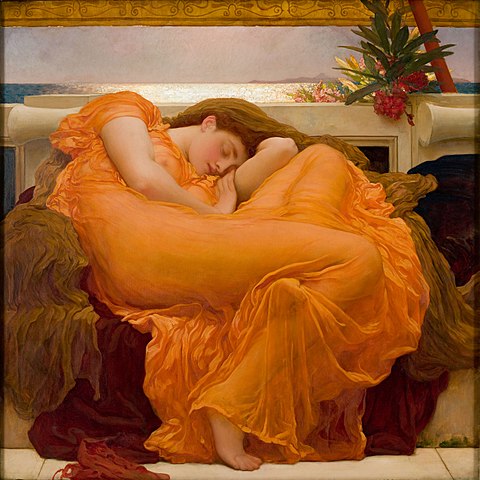
Flaming June is a painting by Sir Frederic Leighton from 1895. It is generally regarded as Leighton’s greatest work, executed in oil on a 47-by-47-inch square canvas and demonstrating his classicist bent.
It is believed that the depicted woman pertains to the frequently carved Greek depictions of sleeping nymphs and naiads.
In the 1960s, Flaming June was rediscovered after having disappeared in the early 1900s.
It was auctioned shortly thereafter, during a period considered difficult for selling paintings from the Victorian era, but it did not sell for its low reserve price of US$140 (equivalent to $1,126 by modern standards).
After the auction, it was quickly acquired by the Museo de Arte de Ponce in Ponce, Puerto Rico.

